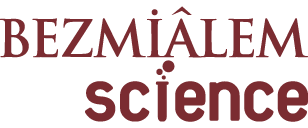ABSTRACT
Granular cell tumors (GCT) are rare neoplasms and their diagnosis is mainly based on histopathologic examination of biopsies. GCT is a neoplasm that has been reported in a variety of organs, including the extremities, head and neck skin, oral cavity and gastrointestinal tract. The cell of origin in GCT is controversial. In this article, we present a case of granular cell tumor of the tongue at the 49-year-old female patient with the knowledge of the literature.
Introduction
Granular cell tumor (GCT) is a rarely seen lesion that mostly displays a benign course. It constitutes less than 1% of head and neck tumors (1). 1-2% of the cases show a malignant course (2-4). GCT is typically located in the extremities and head-neck skin, oral cavity and gastrointestinal system (5). Although it can be seen at any age, it is more common in the 4th and 5th decades. It is thought that peripheral nerves originate from “schwann” cells (2). Its benign forms can be treated by local excision (6).
Discussion
GCT accounts for less than 1% of all head and neck tumors. 50% of GHTs in the head and neck are located in the oral cavity. It is predominantly seen in women in the 4th and 5th decades (1,2,5,8,9). It was first reported by Weber in 1854 and then by Abrikossoff in 1926. It is called granular cell myoblastoma because it is thought to be of striated muscle origin (7).
Very different views have been made regarding the cells from which GCT originate due to its different cell histopathology. It is thought to develop from skeletal muscle, histiocytes, fibroblasts, nerve sheath cells, neuroendocrine cells and differentiated mesenchymal cells (2). Recent immunohistochemical and electronmicroscopic studies have shown that the origin of these tumors is “schwann ”cells (1,2,9). While GCT is immunohistochemically stained with S100, p75, NSE and CD68, inhibina, and vimentin, it is not stained with
smooth muscle actin (SMA), epithelial membrane antigen, HHF-35, synaptophysin, chromogranin, progesterone, androgen, estrogen, carcinoembryonic antigen (CEA), and PanCK (2,3,9). In our case, S100, NSE, CD68, vimentin, and inhibin alpha were positive. Ki-67 proliferation index was found to be 2%. PanCK, CEA, and SMA did not react immunohistochemically.
Although the majority of GCTs are benign, they have been reported to display a malignant behavior at a lower rate. GCT’s being macroscopically well-demarcated, lack of necrosis and degeneration areas, and its slow growth suggests that it is benign (4). In general, 6 criteria were determined for malignancy. These include being spindle cells, large nucleolus-bearing vesicular nucleus, increased mitosis (>2 mitosis/10-200X-domain), increased nucleus/cytoplasm ratio, and the existence of pleomorphism and necrosis. The presence of 3 or more of these criteria supports the diagnosis of malignant GCT. If one or two of these criteria are present, a diagnosis of atypical granular cell tumor is made. In addition, p53 expression and high ki-67 index have been reported to be associated with aggressive progression in recent years. 1-2% of the cases have malignant course (4,9,10). In our case, none of the criteria for malignancy was found, and the ki-67 index was 2%.
The lesions with which GCT is most commonly confused clinically and macroscopically are other soft tissue tumors and traumatic fibromas (4,9).
Its treatment is surgical excision. It recurs approximately at the rate of 10% after it is completely excised. However, when excision cannot be performed completely, regular clinical radiological follow-up is required. In malignant patients, its effect is not known exactly and radiotherapy and chemotherapy are administered (7,9). If recurrence occurs, there are opinions suggesting the application of radiation after surgery (1,7,9).
In conclusion, GCT is a very rare tumor that can be confused with different lesions clinically and macroscopically, for which histopathological evaluation is very important.



